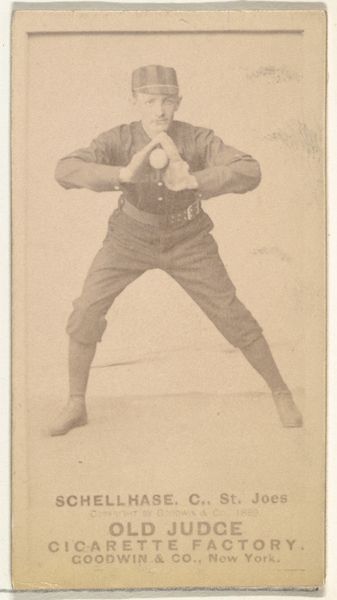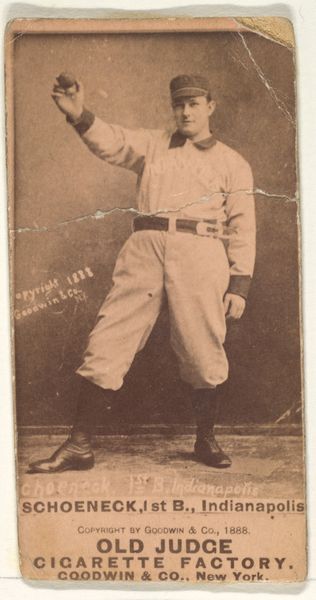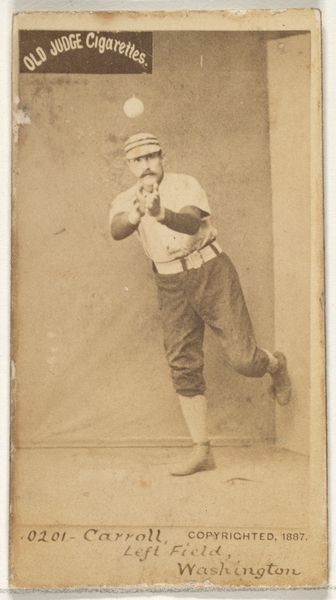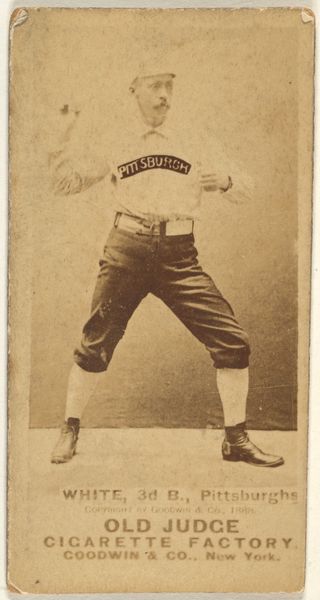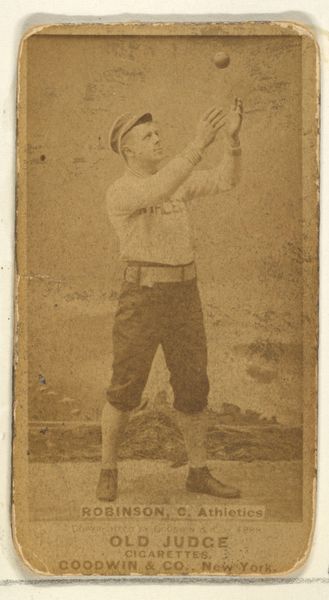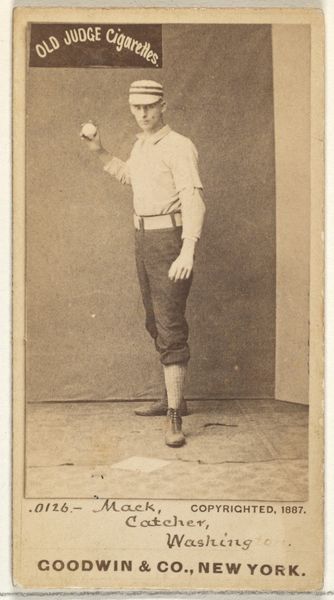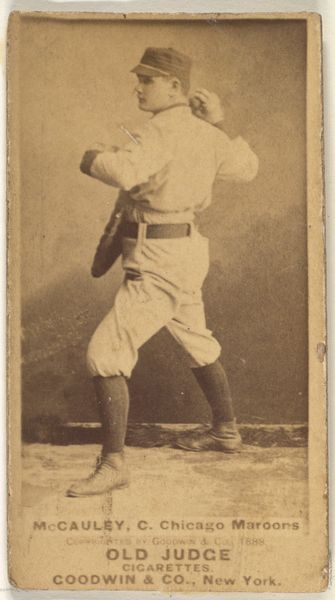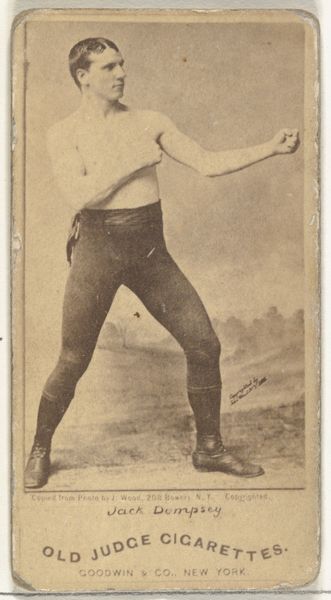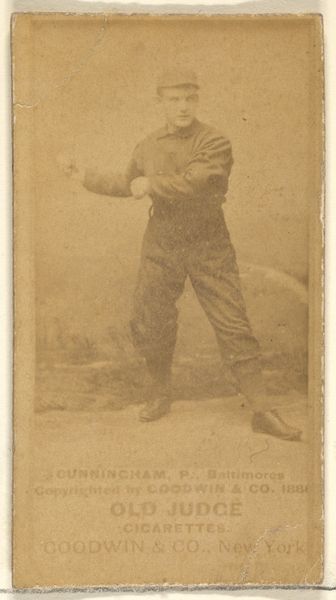
William Ashley "Billy" Sunday, Center Field, Pittsburgh, from the Old Judge series (N172) for Old Judge Cigarettes 1888
0:00
0:00
print, photography
#
portrait
# print
#
baseball
#
photography
#
men
#
athlete
Dimensions: sheet: 2 11/16 x 1 3/8 in. (6.9 x 3.5 cm)
Copyright: Public Domain
Curator: Here we have a sepia-toned albumen print titled "William Ashley 'Billy' Sunday, Center Field, Pittsburgh," produced circa 1888 by Goodwin & Company as part of the "Old Judge" series to advertise cigarettes. What are your initial impressions? Editor: My first thought is this photo encapsulates the ethos of its time. A lone figure, bathed in a nostalgic sepia tone, framed within the commerce of leisure and consumption. The figure seems caught mid-action, almost timeless in this still moment, however there's also an uncanny staged feeling that is really speaking to its history and origins. Curator: The subject’s gaze and posture point upwards to a sphere—the baseball, we assume. The shape resonates with archetypal symbolism; wholeness, potential, unity… but here, linked intrinsically with burgeoning capitalist endeavors, transforming that simple potential to explicit consumption. What happens to an athletic icon when their very image sells cigarettes? Editor: Precisely, the man in the image transforms into an advertisement. He becomes a symbol appropriated by corporate powers, revealing a cultural phenomenon where athletic prowess and endorsements blurred, obscuring the individual, morphing the image into one which serves profit over genuine sporting appreciation. He isn't just playing ball, he is propagating consumption. Curator: He's also propagating a cultural script—of idealized masculinity, of Americana, frozen for all time in this moment of almost Grecian dedication. He almost strikes me as a character on a frieze, or in a history painting of old. Editor: I agree. Looking closer, there's an undercurrent of privilege visible, despite the supposed democratic appeal of baseball. The cigarette advertisement itself would not appeal to certain sections of the public and reflects societal hierarchies of who had access and leisure for these pursuits at the time, therefore, his representation would reflect these inherent social positions. This card inadvertently reveals then, a carefully constructed narrative that quietly marginalizes entire swathes of society. Curator: That interplay of cultural narratives makes it a truly potent image, I feel. Even just at this small scale— the piece exists as part of a larger cultural symbolic vocabulary, doesn’t it? And the cigarette cards remind us of all that culture they participated in. Editor: Absolutely, and it brings with it complex legacies. A great visual summary that prompts so much introspection.
Comments
No comments
Be the first to comment and join the conversation on the ultimate creative platform.

